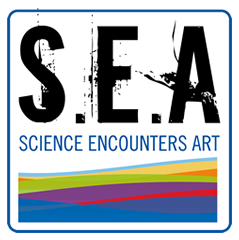Wat je kunt bedenken, kun je ook maken
~~~ for english scroll down ~~~
Werktuigbouwkundige Yvo Witte heeft zijn formele opleiding op de technische school gedaan, maar zijn échte opleiding was vervolgens in de werkplaats van het NIOZ. ‘De vragen en problemen van de wetenschappers van het NIOZ zijn zó specifiek, die kun je maar op één plek bestuderen.’
Drijvende werkplaats
Het werk van een deel van de NIOZ-wetenschappers gebeurt op het onderzoeksschip RV Pelagia. ‘Dat is het enige Nederlandse schip voor oceaanonderzoek. In de internationale onderzoeksvloot is de Pelagia met haar lengte van 66 meter relatief klein. Dat betekent dat we onze constructies voor onderzoek ook niet al te zwaar mogen maken. Een zogeheten piston corer bijvoorbeeld, waarmee je monsters uit de zeebodem kunt happen, mag op de Pelagia maximaal anderhalve ton wegen. Dat is voor ons dan weer een extra uitdaging om zo’n apparaat heel licht uit te voeren, maar wél functioneel. Dat is oneerbiedig gezegd een kwestie van afkijken bij collega’s en vervolgens verbeteren.’
Grote diepten, lange kabels
Yvo bewaart ook bijzondere herinneringen aan de constructies die hij samen met zijn collega’s bedacht om stof te kunnen vangen, midden op de Atlantische Oceaan. ‘Een stofvanger is nog tot daaraantoe. Die kun je vervolgens ook wel op een drijvende boei monteren, maar hoe zorg je dat die op zijn plek blijft boven vijf kilometer diep water? De collega’s bij Rijkswaterstaat hebben kabels van maximaal 150 meter onder hun boeien, dus daar konden wij niets van leren. Uiteindelijk is het ons gelukt om verschillende boeien aan kabels van 5.000 meter op de oceaan te verankeren, en heeft het onderzoek een wetenschappelijk toptijdschrift gehaald.’
‘Kunstenaar Zoro Feigl heeft met zijn aluminium frame waar een soort spuiters aan zijn verankerd een echt “NIOZ-kunstwerk” gemaakt. Iets bedenken is niet zo moeilijk, maar om het vervolgens ook te maken, dat is de kunst!’

Anything you can imagine, you can make
Mechanical engineer Yvo Witte did his formal training at technical college, but his real training came later, in the NIOZ workshop. ‘The questions and problems raised by NIOZ scientists are so specific that there’s only one place you can study them.’
Floating workshop
The work of some NIOZ scientists takes place aboard the research vessel Pelagia. ‘This is the only Dutch vessel dedicated to ocean research. At 66 metres long, the Pelagia is a relatively small member of the international research fleet. This means that we can’t make our research structures too heavy either. Aboard the Pelagia, a piston corer, for example, which is used to take samples from the seabed, can’t weigh more than one and a half tonnes. It’s yet another challenge for us to make such a device very light but functional. To put not too fine a point on it, it’s a matter of copying colleagues’ work and then improving on it.’
Huge depths, long cables
Yvo also has special memories of the structures that he and his colleagues came up with in order to catch dust in the middle of the Atlantic Ocean. ‘A dust collector is just the first step. Then of course you can mount it on a floating buoy, but how do you keep it in position over a depth of five kilometres? Our colleagues at Rijkswaterstaat have cables up to 150 metres long under their buoys, so we couldn’t learn anything from that. In the end, we managed to anchor various surface buoys to 5000-metre cables, and the research made it into a top scientific journal.’
‘Artist Zoro Feigl has made a real-life “NIOZ artwork” with his aluminium frame with various nozzles attached to it. Imagining something isn’t all that hard – the art is to actually make it!’

SEA Art tour SPIRACLE
By Zoro Feigl
Artwork is temporarily not part of the SEA Art Tour! Due to circumstances it was not possible to realize the artwork, we apologize for this. We are working on a solution.
Kunstwerk tijdelijk geen onderdeel van de SEA Art Tour! Door omstandigheden was het niet mogelijk het kunstwerk te realiseren, onze excuses hiervoor. Wij werken aan een oplossing.